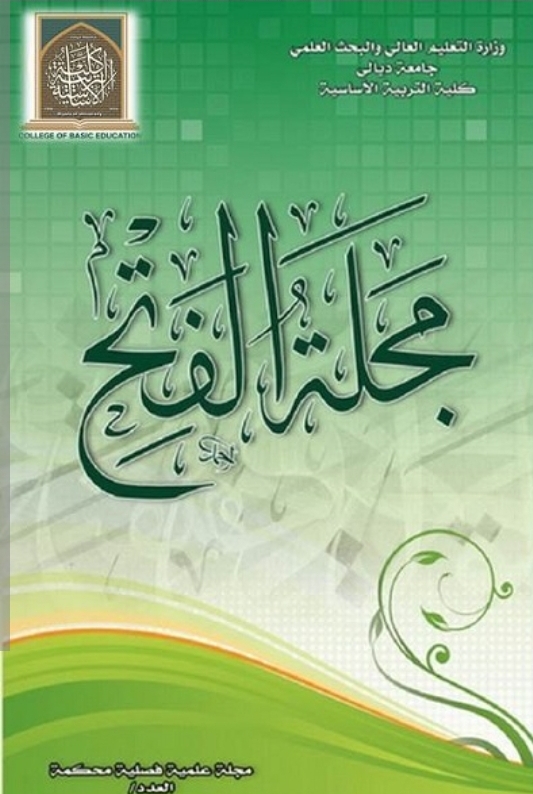The Impact of Using Ishikawa Diagram Strategy to Enhance the Problem Solving Skill in Composition Writing of Iraqi EFL College Students
DOI:
https://doi.org/10.23813/FA/23/1/14Keywords:
Ishikawa diagram strategy, problem solving skillAbstract
This study aims at investigating the impact of using Ishikawa diagram strategy to enhance the problem solving skill in composition writing of Iraqi EFL College Students. To achieve the aim of the present study, the following hypothesis has been put: There is no statistically significant differences at (á≤0.05) between the mean scores of the experimental group who is taught problem solving skill in composition writing according to Ishikawa diagram and that of the control group who is taught according to the traditional way in the post-test .Thus, an experiment design was adopted. The sample of the study was Purposive sample consisted of (103) students from 3rd year class\ English department \ college of basic education\ University of Diyala (52) students as an experimental group and (51) students as a control during the academic year 2017 -2018. Meanwhile, the subjects of both groups are matched according to their age, level of parents’ education, and their scores in the pre-test. Pre-test and post-test have been designed .The validity of the tests have been obtained by exposing them to jury members in the fields of TEFL and linguistics. The data was collected, coded out and analyzed by using independent T-Test, two-way ANOVA and paired T-Test to answer the hypothesis of the study. The reliability of the tests has been secured by using Alfa Cronbach formula found to be (0.86) which indicates high reliability. Statistical analysis of data achieved through using the t-test indicates that there are statistically significant differences between the mean scores of the two groups in favour of the experimental group in the post test.
The researcher concludes that using Ishikawa diagram strategy enhances students’ problem solving skill in composition writing and provides them with opportunities to actively develop skills, which enables them to locate, gather, analyze, critique and apply information in a wide range of contexts.
References
Arnold, J. D. (1992). The Complete Problem Solver. Canada: John Wiley & Sons Inc., 1992.
Bachman & Palmer (2000). Language testing in practice Oxford: Oxford University Press.
City Process Management. (2008). Cause and Effect Analysis using the Ishikawa Fishbone & 5 Whys. Retrieved from. cityprocessmanagement.com/Downloads/CPM_5Ys.pdf.
Dahari, K. (2013). Konsep Penyelesaian Masalah. Retrieved from http://dahare.blogspot.co.id/ 2013/02/.
Gravetter, F. J. and Forzano, L. B. (2012), Research Methods for Behavioral Sciences (3rd Ed.). New York: Cengage Learning.
Heppner, P. P., Baumgardner, A. H., & Jakson, J. (1985). “Depression and Attribution Style: Are They Related?” Cognitive Therapy and Research. 9, 105-113.
Ishikawa K, Loftus JH, (Eds): Introduction to quality control Tokyo, Japan: 3A Corporation; 1990.
Kneeland, Steve. (Translated by: Kalaycı, Nurdan) (2001). Problem Çözme, Gazi Kitabevi, Ankara.
Krysik, J. L. and Finn, J. (2013), Research for Effective Social Work Practice (3rd Ed.). New York: Routledge Publishing.
Oller, J. W. (1979). Language Test at School. London: Longman.
Pande, P., & Holpp, L. (2001). What Is Six Sigma? (McGraw-Hill Education, Ed.). Blacklick, Ohio.
Prasad, K. G. D. et al. (2012). Application of Six Sigma Methodology in an Engineering Educational Institution. International Journal of Emerging Sciences, 2(2), 210–221.
Preuss, P. G. (2003). School Leader’s Guide to Root Cause Analysis: Using Data to dissolve Problems. Larchmont, NY: Eye on Education.
San, G. S., Tjitro, S., & Santoso, M. (2003). Desain Eksperimen untuk Mengoptimalkan Proses Pengecoran Saluran Keluar Teko. JURNAL TEKNIK MESIN, 5(1), 5–10. Retrieved from http://www.academia.edu/1071634/
Scarvada, A. J. et al. (2004). A Review of the Causal Mapping Practice and Research Literature. In Second World Conference on POM and 15th Annual POM Conference. Cancun, Mexico: POM.
Tiann. (2012). Diagram Fishbone dari Ishikawa. Retrieved from https://tianno.wordpress.com/2012/05/
URL: http://www.fedu.metu.edu.tr/ufbmek-5/b_kitabi/PDF/Kimya/Bildiri/t179d.pdf.
Yunus, A.S., R. Hamzah and R.A. Tarmizi, (2006). Schools and Corporations. Mahwah, New Jersey: Problem solving abilities of Malayasian university Lawrence Erlbaum Associates. students. International Journal of Teaching and 17. Novak, J.D. and A.J. Cañas, 2005. Building on New Learning in Higher Education
Downloads
Published
How to Cite
Issue
Section
License
Copyright (c) 2023 https://creativecommons.org/licenses/by/4.0/

This work is licensed under a Creative Commons Attribution 4.0 International License.
حقوق النشر والترخيص
تطبق مجلة الفتح للبحوث التربوية والنفسية ترخيص CC BY (ترخيص Creative Commons Attribution 4.0 International). يسمح هذا الترخيص للمؤلفين بالاحتفاظ بملكية حقوق الطبع والنشر لأوراقهم. لكن هذا الترخيص يسمح لأي مستخدم بتنزيل المقالة وطباعتها واستخراجها وإعادة استخدامها وأرشفتها وتوزيعها ، طالما تم منح الائتمان المناسب للمؤلفين ومصدر العمل. يضمن الترخيص أن المقالة ستكون متاحة على نطاق واسع بقدر الإمكان وأن المقالة يمكن تضمينها في أي أرشيف علمي.
لمزيد من المعلومات، يرجى متابعة الرابط: https://creativecommons.org/licenses/by/4.0/.



